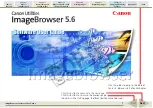
&KDSWHU.'LDJQRVLV3URJUDP*'7021
GDTMON <ENTER>
..
//RRDDGGLLQQJJ
JJGGWWP
PRRQ
QXXQQGGHHUU66&&2
28811,,;;
In order to be able to use the gdtmon program under SCO UNIX (2.x, 4.x and 5.x), it be-
comes necessary to substitute the standard terminal entry by a new one:
cd /usr/lib/terminfo <ENTER>
tic gdt386.src <ENTER>
Before each loading of gdtmon, this terminal has to be activated by:
TERM = gdt386 <ENTER>
export TERM <ENTER>
These two lines can also be inserted in the
.profile
file and will then be automatically proc-
essed during each login. The gdtmon program itself is copied during the SCO UNIX installa-
tion (chapter G of this User's Manual) into the
/etc
directory. gdtmon is loaded by entering:
gdtmon <ENTER>
.7KH*'70213URJUDP
As mentioned before, the GDTMON program appears identical for all operating systems, so
we can demonstrate the use and functioning of this program regardless of the operating
system used. In previous chapters we have already described the hierarchical structure of
the GDT firmware. We have defined 4 different levels of hierarchy: Level 1 where the physi-
cal SCSI drives named
Physical Drives
are found, level 2 containing the
Logical Drives
(made up of one or several
Physical Drives
), level 3 where we have the
Array Drives
, and fi-
nally, level 4 where the
Host Drives
are. Only the latter ones are known to the operating sys-
tem. The drive of a given level of hierarchy is always set up by using the drives of the next
lower level as components. Accordingly, GDTMON has various menu options, each referring
to one level of hierarchy
+RVW'ULYHV
Level 4
/RJLFDO'ULYHV
Level 2
3K\VLFDO'ULYHV
Level 1
Each menu option displays the performance of the drives belonging to the corresponding
level. (Note: The performance of Array Drives and Host Drives is identical). The performance
is measured in KB/s (kilobyte per second, transfer rate) and IO/s (I/Os per second, number
of simultaneously processed I/Os on the ICP Controller). The performance is displayed nu-
merically as well as graphically in the form of variable horizontal bars, with separate indica-
tions for each drive and its write and read accesses.
..
66HHOOHHFFWW&&RRQQWWUURROOOOHHUU
This menu option yields a list of available ICP Controllers. By selecting a protocol, you have
either access to the ICP Controller(s) in your local computer (e.g., MS-DOS, Windows NT,
Windows 95 or OS/2 protocol), or to a ICP Controller in another computer (server or work-
station) in the network (NetWare NCPE or IBM NETBIOS protocol). All diagnosis and main-
tenance functions of GDTMON refer to the ICP Controller you have selected here (and the
SCSI devices connected with this controller).






































